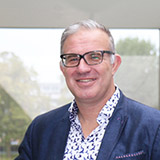Bioengineering the Musculoskeletal System: Models of Injury and Regeneration
Using bioengineered tissues to develop new treatments for conditions affecting the musculoskeletal system.
Conditions compromising the daily function of the musculoskeletal (MSK) system are characterised by debilitating pain and limited mobility, accounting for 30% of GP consultations and 25% of surgical interventions, costing UK society £7.4bn annually.
Developing new treatments that reduce this socio-economic burden is of significant importance to our nation’s future healthcare provision. To achieve this, we need new ways of modelling MSK health that do not exploit animals, allowing us to ethically develop and test new therapies.
Bioengineered models recapitulating the complex structures and physiological response of musculoskeletal tissues, provide an alternative experimental platform to the animal models currently used to recreate disease, injury and regeneration.
Unlike animal models, our bioengineered tissues can accurately recreate human physiology, allowing investigation of the biological processes that underpin the musculoskeletal conditions that afflict society.
Loughborough's expertise in musculoskeletal bioengineering is led by Professor Mark Lewis and Dr Andrew Capel.
Research in focus
Human Model of Traumatic Musculoskeletal Injury
During investigation of musculoskeletal injuries occurring as a result of high levels of trauma, such as those resulting from military/combat environments, soft tissue is observed to continually degrade even once treated. This can seriously compromise patient recovery and has long-term implications for their ability to function in daily life.
Modelling this type of injury cannot be achieved through human trails, and animal models are ethically compromised. Therefore, our research team has developed a laboratory grown soft tissue model of traumatic injury in humans.
This model has the power to provide new understanding into why soft tissue fails to recover after significant trauma and allows the underlying biological processes to be identified. We use this model to test new targeted therapeutics that may be able to aid soft tissue regeneration in this setting.
- Fleming JW, Capel AJ, Rimington RP, Wheeler P, Leonard AN, Bishop NC, Davies OG, Lewis MP. (2020). Bioengineered human skeletal muscle capable of functional regeneration. BMC Biology, volume 18, article number: 145. DOI: 10.1186/s12915-020-00884-3
- Fleming JW, Capel AJ, Rimington RP, Player DJ, Stolzing A, Lewis MP. (2019). Functional regeneration of tissue engineered skeletal muscle in vitro is dependent on the inclusion of basement membrane proteins. Cytoskeleton, Volume 76, Issue 6. DOI: 10.1002/cm.21553
Musculoskeletal Injury: Functional Neuromuscular and Vascular Regeneration
When developing models of musculoskeletal health, it is important to incorporate the skeletal muscle component, as well as the supporting cell types with which it interacts.
Two routinely observed mechanisms of musculoskeletal injury involve a complete removal, or significant reduction, in functional vascular and neural networks, with restoration of these networks being a key component in musculoskeletal regeneration.
As such, it is important that bioengineered models of musculoskeletal health have the capacity to incorporate multiple cell types.
Consequently, the group has developed reproducible methodologies for incorporation of human derived vascular and neural cells into our 3D skeletal muscle tissues, thus providing a high-throughput platform to further investigate the cellular and molecular mechanisms that regulate musculoskeletal health during injury and regeneration.
- Rimington RP, Fleming JW, Capel AJ, Wheeler PC, Lewis MP. (2021). Bioengineered model of the human motor unit with physiologically functional neuromuscular junctions. Scientific Reports, volume 11, article number: 11695. DOI: 10.1038/s41598-021-91203-5
- Martin NRW, Passey SL, Player DJ, Mudera V, Baar K, Greensmith L, Lewis MP. (2015). Neuromuscular junction formation in tissue-engineered skeletal muscle augments contractile function and improves cytoskeletal organization. Tissue Engineering Part AVol. 21, No. 19-20. DOI: 10.1089/ten.tea.2015.0146
Related research
- Aguilar-Agon KW, Capel AJ, Martin NRW, Player DJ, Lewis MP. (2019). Mechanical loading stimulates hypertrophy in tissue-engineered skeletal muscle: Molecular and phenotypic responses. Journal of Cellular Physiology, Volume 234, Issue 12. DOI: 10.1002/jcp.28923
- Capel AJ, Rimington RP, Fleming JW, Player DJ, Baker LA, Turner MC, Jones JM, Martin NRW, Ferguson RA, Mudera VC, Lewis MP. (2019). Scalable 3D Printed Molds for Human Tissue Engineered Skeletal Muscle. Frontiers in Bioengineering and Biotechnology. DOI: 10.3389/fbioe.2019.00020
- Capel AJ, Smith MAA, Taccola S, Pardo-Figuerez M, Rimington RP, Lewis MP, Christie SDR, Kay RW, Harris RA. (2021). Digitally Driven Aerosol Jet Printing to Enable Customisable Neuronal Guidance. Frontiers in Cell Developmental Biology. DOI: 10.3389/fcell.2021.722294
- Turner MC, Rimington RP, Martin NRW, Fleming JW, Capel AJ, Hodson L, Lewis MP. (2021). Physiological and pathophysiological concentrations of fatty acids induce lipid droplet accumulation and impair functional performance of tissue engineered skeletal muscle. Journal of Cellular Physiology, Volume 236, Issue 10. DOI: 10.1002/jcp.30365
- Rimington RP, Capel AJ, Chaplin KF, Fleming JW, Hemaka Bandulasena HC, Bibb RJ, Christie SDR, Lewis MP. (2019). Differentiation of bioengineered skeletal muscle within a 3D printed perfusion bioreactor reduces atrophic and inflammatory gene expression. ACS Biomaterials Science & Engineering 2019 5 (10), 5525-5538. DOI: 10.1021/acsbiomaterials.9b00975
Meet the experts
Drawing on 25+ years of experience in bioengineering of functional tissue engineered musculoskeletal constructs, Professor Mark Lewis leads a renowned research group in molecular and cell biology, underpinned by subject knowledge in biochemistry and physiology. The research takes a primarily in vitro approach and has, over the years, moved from conventional 2D to 3D cultures, involving close collaboration with physiologists, biomechanists, engineers, (bio)chemists and clinicians adding to the group's expertise in molecular cell biology.
Dr Andrew Capel’s research operates at the interface between chemistry, engineering, and biology and has encompassed a broad spectrum of research projects focused predominantly around 3 distinct themes:
- The development of bioengineered models of the musculoskeletal system during health, disease and injury
- The fabrication and patterning of functional scaffolds, surfaces and biointerfaces to control cellular behaviour
- The design and manufacture of automated, self-optimising perfusion devices for applications in chemical synthesis, drug screening and tissue culture.
Professor Lewis and Dr Capel would be happy to receive enquiries about research collaborations and/or industrial partnerships in the area of musculoskeletal biology.

